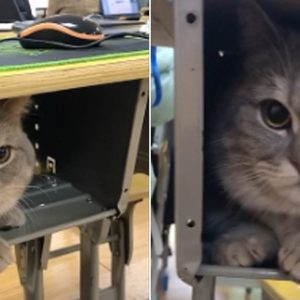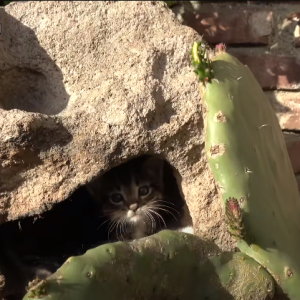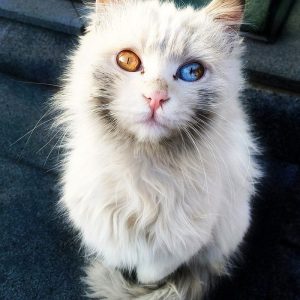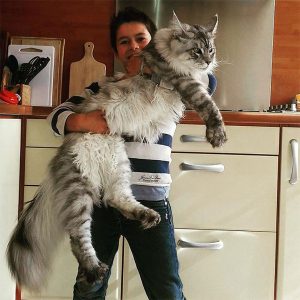Baba, the feline protagonist, plays a dual role as narrator and subject in what could be the most distinct cat chronicle book ever printed.
/https://tf-cmsv2-smithsonianmag-media.s3.amazonaws.com/filer/95/db/95db799b-fddf-4fde-91f3-77024442b92d/egypt_kitty_social.jpg)
In his latest book, “A Cat’s Tale,” Paul Koudounaris uses his pet cat Baba as the inspiration for a unique historical journey through feline history. Koudounaris hadn’t intended to adopt Baba when he visited the North Central Animal Shelter in 2011, but the six-month-old brown tabby caught his attention with her intent green eyes and outstretched paw. Baba became not only Koudounaris’s beloved companion, but also the narrator and model for his book. “A Cat’s Tale” covers thousands of years of feline history, from ancient Egypt to modern times, highlighting both famous and forgotten cats and telling the story of Felis catus’ journey throughout history.
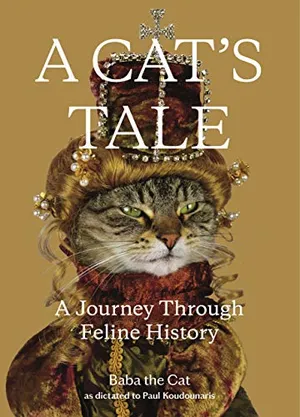
Baba the Cat is all set to take you on a remarkable journey through the rich and fascinating history of cats. Brace yourself for an exciting adventure that will reveal the true character of felines – their heroic acts, deep love, tragic stories, and even their sacrifices. You may be skeptical at first, but Baba the Cat is here to prove that the history of felines is more serious and profound than you thought.
/https://tf-cmsv2-smithsonianmag-media.s3.amazonaws.com/filer/76/2f/762f428e-d0f8-46a6-bdd0-e88536ba6f3c/roman_ch_3.jpg)
During Julius Caesar’s reign, Roman soldiers employed the assistance of cats to safeguard their supplies from pests. These felines were so valuable that they accompanied the imperial legions on their journey to Britannia. In fact, some Roman armies even adorned their shields with images of cats. This intriguing historical tidbit was shared by author Paul Koudounaris.
/https://tf-cmsv2-smithsonianmag-media.s3.amazonaws.com/filer/77/0d/770d6ddf-1498-478c-99d7-cf5677a40562/cowboy2_billy_the_kitten_ch_6.jpg)
Cowboys often traveled with their feline companions, who acted as both mousers and friends. The idea of cats being more than just pets was popularized by writers like Mark Twain and poet Cy Warman. Paul Koudounaris’ book, A Cat’s Tale, stands out from the rest due to its unique approach. It is narrated by Baba, a cat, who not only shares her perspective on feline history but also appears dressed as historic figures throughout the book. Koudounaris challenges the idea of history being solely human-centric by including the stories of forgotten cats and animals left out of history. The idea for the book came about while Koudounaris was researching pet cemeteries around the world. He realized he had too many fantastic stories about cats to include in that project and decided to create a book that showcased the rich history of cats, with Baba as the star.
/https://tf-cmsv2-smithsonianmag-media.s3.amazonaws.com/filer/65/97/6597f09c-16da-411a-82c8-4cb4ffa7145c/cardinal_richelieu_ch_5.jpg)
Cardinal Richelieu, who served as the chief minister of Louis XIII in France, was known for his strict and authoritative leadership style. However, he had a soft spot for cats and was often surrounded by a dozen felines. One of his chroniclers even noted that the cardinal’s “tyrant” personality softened in the presence of his beloved mewing companions.
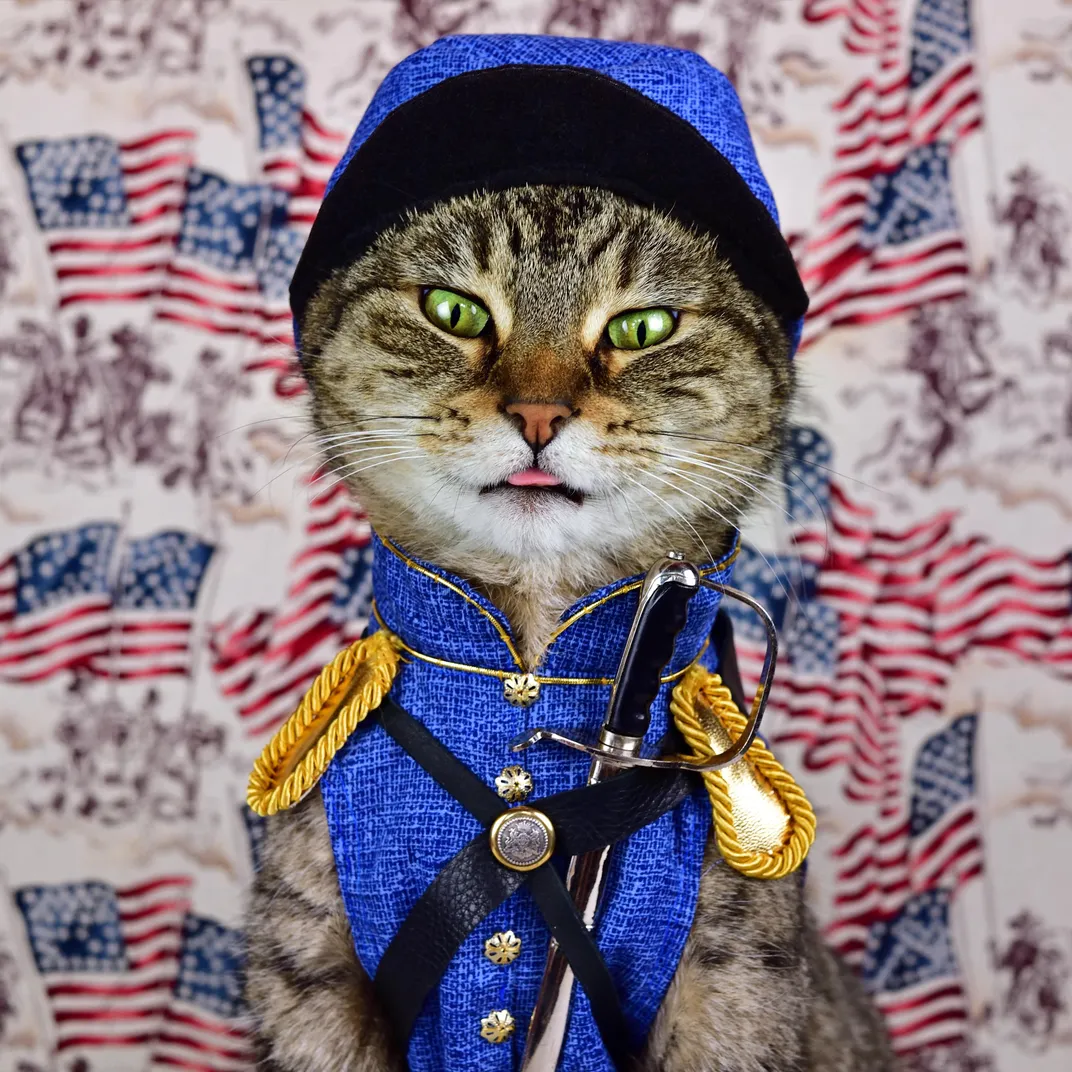
During the early 19th century, cats became a regular feature in U.S. Army commissary storehouses, with an annual budget of $18.25 assigned for each cat’s upkeep on army premises. Paul Koudounaris’ book, A Cat’s Tale, is more than just a book; it symbolizes the love and bonding between him and his cat, Baba. The book encompasses feline history, cosplay and is a tribute to all cats in our lives. The creation of the book involved two significant approaches: designing appropriate costumes for Baba and researching archives, libraries, and other sources to compile a comprehensive history of cats and their role in human society. Finding the right costume was the most challenging part of the photography process, and Koudounaris sourced items from eBay, flea markets, and vintage doll meetups. He even hired a friend, Desirae Hepp, to help create some of the more specific and complex costumes. Despite the elaborate wardrobe, dressing Baba and getting her to pose was remarkably easy, with her nailing the perfect look and expression on the first shot in about 99% of the photoshoots.
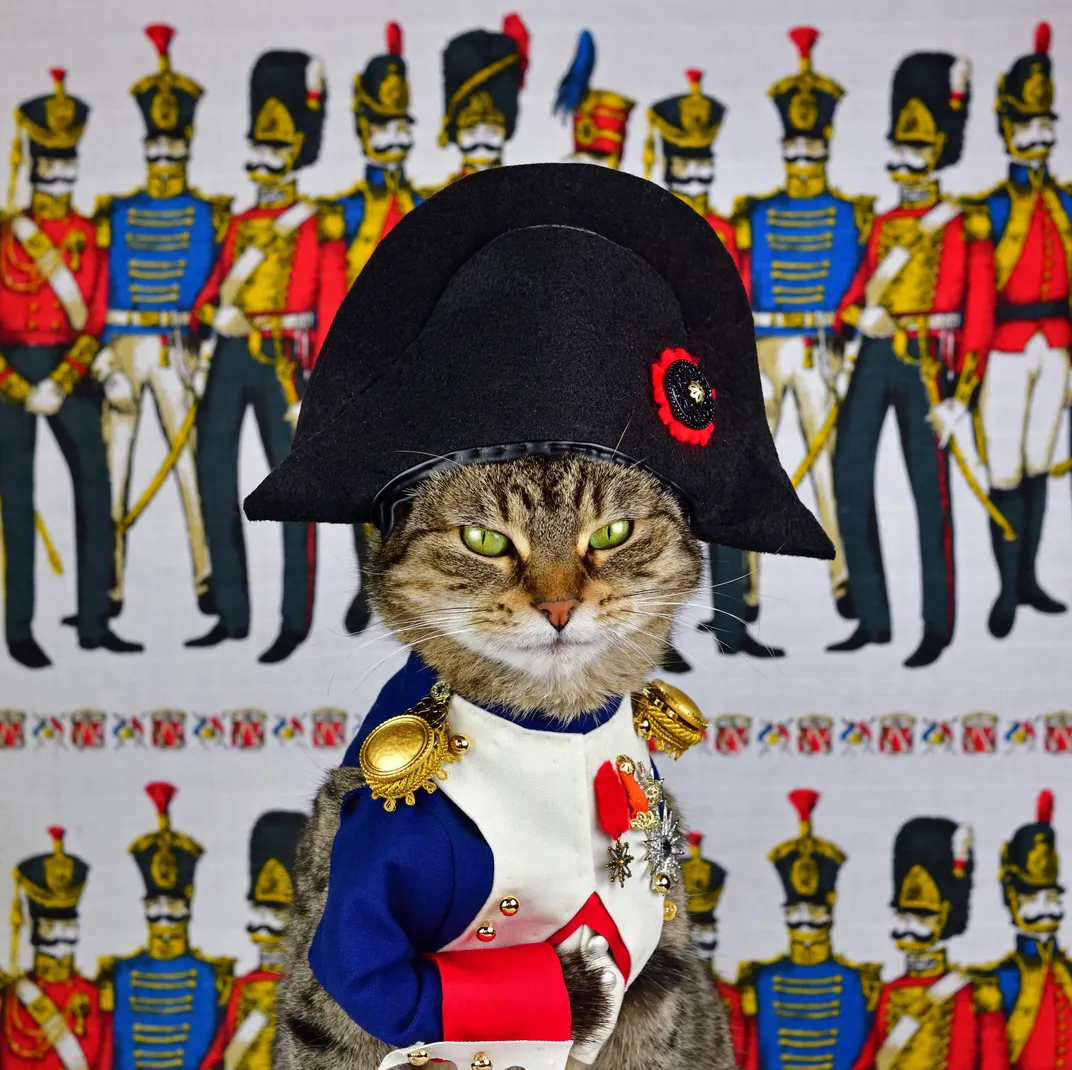
Napoleon Bonaparte was not fond of felines and even declared, “Dogs and cats possess two different types of loyalty.” He opposed the notion of utilizing cats as rat catchers in Paris’s streets and opted for poison instead. However, this method caused sickness among both humans and rodents. Paul Koudounaris.
/https://tf-cmsv2-smithsonianmag-media.s3.amazonaws.com/filer/11/2c/112cfb7f-d73f-40d6-afab-7e05be7c7b73/andy_warhol_ch_6.jpg)
Andy Warhol, the famous Pop Art innovator, was a lover of cats and owned up to 25 Siamese cats at a time, with only one named Sam being an exception. Prior to his fame, Warhol published a book of cat lithographs in 1954, which is now worth tens of thousands of dollars. Paul Koudounaris conducted research in various places across the globe, including Wisconsin, Massachusetts, France, and New Zealand, and discovered fascinating stories about cats everywhere he looked. He explored the history of Maneki-Neko, the Japanese cat that inspired the popular raised-paw good luck cat in Tokyo, and also learned about Room 8, a grey tabby that became a school’s mascot in Los Angeles for 16 years, receiving hundreds of fan letters, TV specials, and a biography. Koudounaris found the Puss’n Boots Award to be one of his favorite discoveries, a lost prize given by a California cat food company in the 1950s and 1960s. The award, given to black cat Clementine Jones, who walked from Dunkirk, New York, to Aurora, Colorado, in search of her human family, including a single paw with seven toes that made her unique, changed the way Americans perceived cats as second-grade animals to dogs. Cats have now become pop culture icons and beloved pets, but Koudounaris believes that there is still more to learn about them. He encourages readers to cherish their own cats and experience history through them.
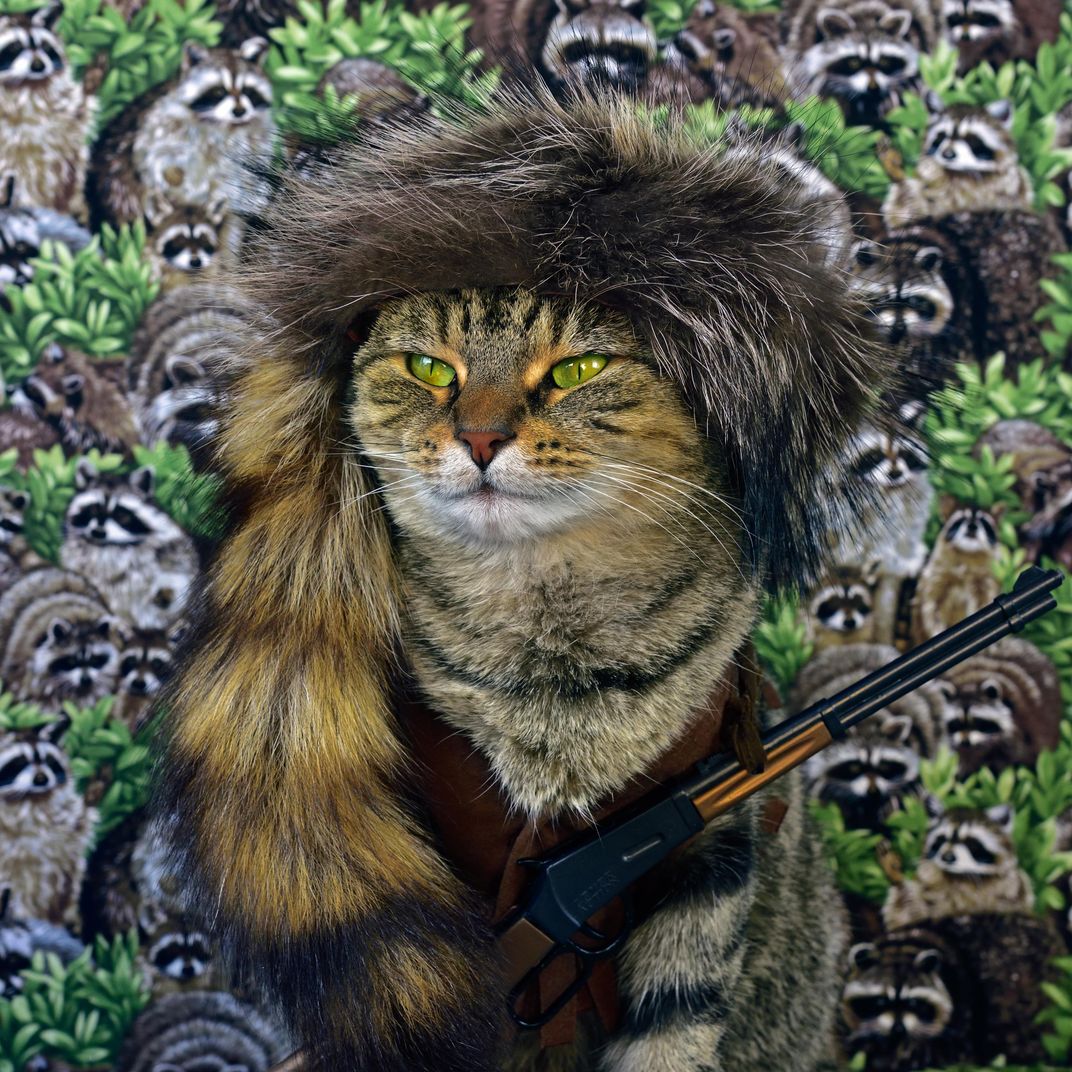
During the American frontier era, cats were highly sought after but not easily found. Crafty businessmen in the Midwest made a fortune by purchasing cats in large quantities and transporting them to the Dakotas. Back in the 1880s, an Arizona cat fetched a whopping $10, which was considered a significant amount of money at that time. In Alaska, cats were so valuable that they were traded for their weight in gold. This fascinating piece of history was shared by Paul Koudounaris.
/https://tf-cmsv2-smithsonianmag-media.s3.amazonaws.com/filer/9d/e2/9de20442-cd60-48c0-8f8f-5e816b374c04/parisian_lady_ch_5.jpg)
During the 17th century in France, cats became the fashionable choice for women in the court as their companions instead of lapdogs. Princess Elizabeth Charlotte, who was married to Philippe I, Duke of Orléans, even went so far as to declare that cats were the most captivating animals on the planet. This newfound love for feline friends was a notable shift from the previous preference for lapdogs among the upper classes. The trend of owning cats as pets has continued to this day, with many people finding them to be delightful and entertaining companions.
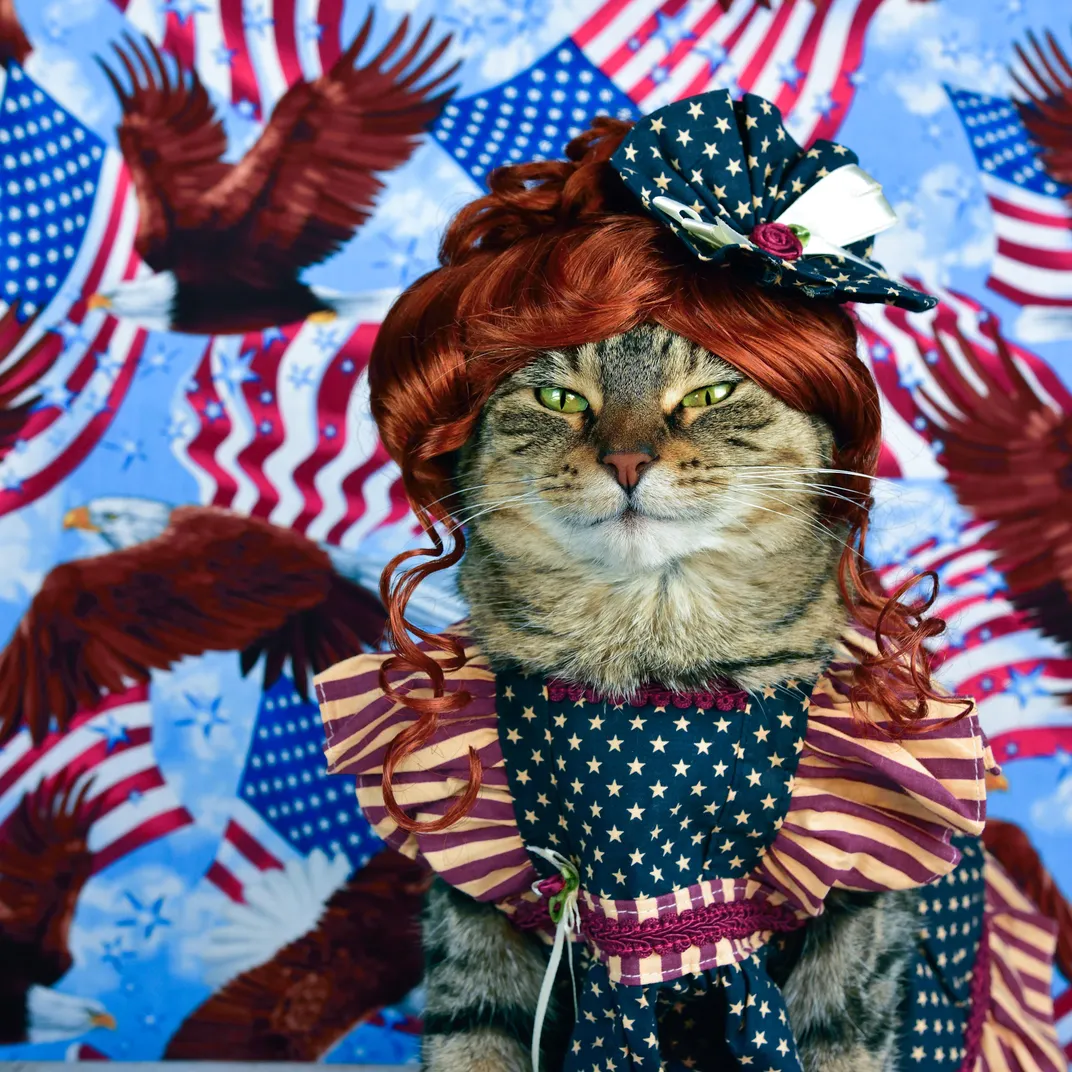
Soon after the American Revolution, the United States became the pioneer in allocating a budget for cats. This budget of around $1,000 per year was specifically reserved for postal cats, whose job was to keep the mouse population under control. The amount of money distributed to cities depended on the volume of mail they handled.

Following the American Revolution, the United States emerged as the pioneer in allocating funds for cats in its budget. The government provided about $1,000 annually for postal cats, whose primary role was to control the population of mice. The distribution of the funds was based on each city’s mail volume.



